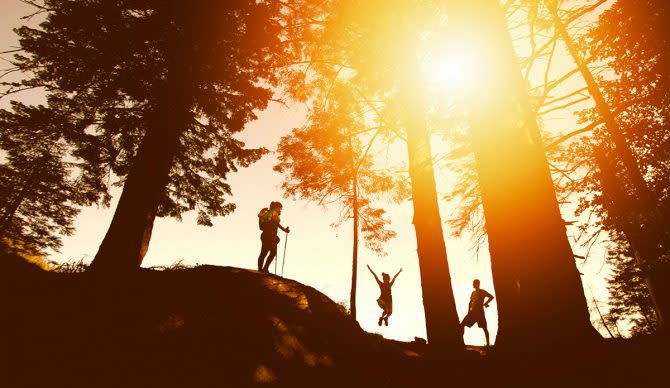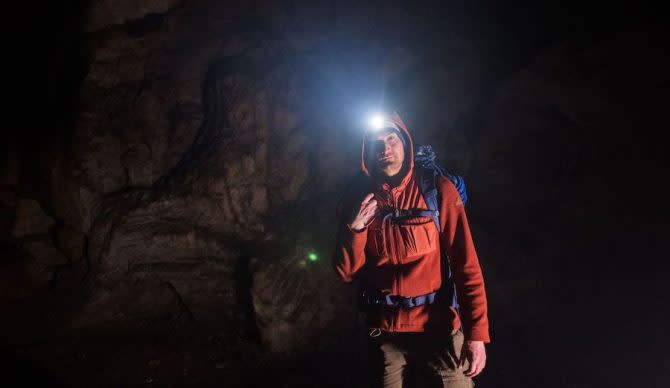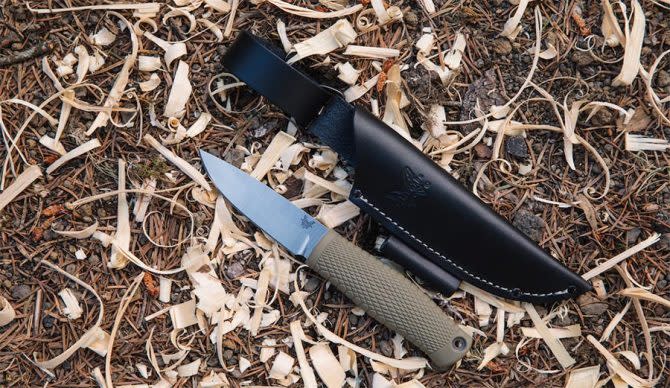As Hiking Season Kicks Into Gear, Here Are 10 Essentials to Have In Your Pack

When it comes to hiking, preparation is crucial. Failure to do so can put you, or others around you, in precarious situations. For example, on a tragic February weekend this year on California’s Mt. Baldy, where one hiker perished, a group that was adequately equipped to survive a chilly night on the mountain was able to be rescued and make it out alive.
From my hiking experience, I tend to observe that the people who methodically prepare what they bring on a hike are also the people who tend to smartly avoid dangerous situations. Garmin’s 2023 inReach SOS data backs up this observation, stating that less than half of all emergency calls are placed to rescue the owner of the emergency device. Most of those possessing satellite emergency devices called in rescues to save the owner’s group as a whole, other members of the owner’s group, or third parties.
But that said, unexpected events can, and will, happen, to even the most conscientious hikers. Thus, it’s important to be familiar with the “10 essentials,” a list of items to pack on a hike that can prove lifesaving in the case of injuries, drastic changes in weather, and/or unexpected delays. As the springtime sun begins to thaw out snow and our favorite mountain trails open up, now is a good time to acquaint yourself with, or revisit, the 10 essentials.
Navigation
I have traditionally relied on the helpful tools within my smartphone for navigation in the backcountry. Hiking apps like Gaia GPS and AllTrails are quite useful to track your progress or follow a trail. I’ve found that, on airplane mode, my iPhone 12 has plenty of battery to navigate for a three-night backpacking trip, and I tend to bring an extra external battery just in case.
However, in order to get the most out of navigating with a smartphone, you need to know its limitations. For example, not all trails are correctly marked on these apps, so you can’t blindly follow dotted lines and not use your common sense of direction. If hiking without a trail, you need to know how to read a topo map. And, of course, smartphones can run out of battery and get damaged or lost.
That’s why the 10 essentials recommends that you don’t rely on these electronic devices and carry a good ol’ fashion paper topo map and compass as a back up. I have a small compass tool that doubles as an emergency whistle that I leave clipped inside my backpack at all times to assure I never forget it.

Illumination
Having a flashlight or headlamp is a key tool in the backcountry. I’ve been on hikes where my progress was slower than expected and I didn’t get back to the trailhead until after dark. When you possess some type of illumination, this doesn’t become a stressful situation, whereas trying to stay on the trail in the dark without a light could turn south quickly.
I personally prefer a headlamp, as it keeps your hands free to use hiking poles, but flashlights are just as good at doing the job. I actually sometimes bring one of each on long hikes just to be safe. Be sure to bring extra batteries, as it can be hard to gauge when your flashlight or headlamp batteries are running low on juice.
Sun Protection
Don’t be the person who returns from their hike bright red. Avoiding the sun can be particularly crucial for survival if you are exposed in the elements for longer than you were planning.
Sun protection comes in many forms. I picked up this foldable hat by Sunday Afternoons on sale at an REI, and I’ve taken it with me nearly everywhere since. I love that it’s lightweight, packs away easily given that it folds flat, and is water resistant. The hat’s wide brim takes a lot of the pressure off of heavily sunscreening my face, too.
Having a proper pair of sunglasses that block 100 percent of UV light is also a must in the outdoors. I prefer the wrap-around style lenses that better protect your eyes. I’ve noticed that the flat style lenses can still let light in through your peripherals and, after a long day of hiking, can lead to sunburnt eyes.
For skin protection, find an eco-friendly, non-chemical sunscreen that won’t damage rivers and lakes. I personally try to limit the sunscreen to my face and cover my extremities with layers of clothing if the temperatures allow. When on a multiple day trip, thick mineral sunscreens start to pile up on your skin and get a little uncomfortable. But sometimes, that’s the only option. Don’t forget to protect your lips with SPF chapstick as well.
First Aid
Preparing a proper first aid kit and giving it its own, separate bag to live in is a nice hack for hiking. This way, when you go out, you don’t have to pour over a list of all the first aid items you need. Simply toss your kit in the pack and replenish it as it gets used. Useful items include gauze, bandaids, disinfecting/antibiotic ointment, pain medication like Ibuprofen (for those altitude headaches), and a diarrhea medication in case you get an unfortunate case of Giardia.
Other parts of my first aid kit that have proved useful include a tick removal kit and Moleskin to cover up any painful blisters.

Knife
Having a good, sharp knife can solve many problems that occur in the backcountry. It also can give you a (perhaps false) sense of protection should you encounter an aggressive animal or human. I have a small, light-weight knife that I use for shorter trips, and a larger, multi-tool knife that includes pliers, a screwdriver, a can opener, etc., which I take on longer excursions. I’ve rarely had to use my knife for more than cutting apples, but it can be a lifesaving piece of equipment in certain scenarios.
Fire
Human ancestors have been harnessing the life-saving powers of fire for hundreds of thousands of years. Having the tools to easily make a fire as part of your pack is important. For most, that can be as simple as adding a lighter to your supplies. Lighters eventually run out of fuel or can malfunction, so I always include waterproof matches in my packs on longer trips. I’ve never had to actually use them.
If hiking in an area where wood to start a fire is scarce or off limits from being collected, you can bring a gas-powered camping stove. I typically bring one of these anyway for cooking to avoid the hassles of making a fire and to follow leave-no-trace principles at my campsites. Starting a controlled fire for cooking can be dangerous, especially among the tinder of a dry summer or fall out West.

Shelter
This is one of the 10 essentials that I can definitely improve on. The idea of bringing some type of shelter is to prepare for an unplanned night spent in the wilderness, or to protect yourself from the elements. The temperature inside a tent, with protection from the wind, can provide needed warmth versus the temperatures exposed to the elements. That said, I only bring tents on planned overnight trips, not on day hikes. For lighter hikes you can improvise and bring items like a bivy sack, light, stuffable sleeping bag, a space blanket, a tarp, or even a large plastic trash bag, to create improvised shelter if need be.
Extra Food
When heading out into the backcountry, don’t just bring the exact amount of calories you think you’ll need for the hike. Bring extra assuming that you might have to spend more time out there than you think. I’ve personally been able to help other unprepared hikers with extra snacks I brought, and I’ve also had the favor returned to me when a packing miscommunication occurred with my girlfriend and we didn’t bring enough food on a two-night trip.
Make sure you have sufficient food items that are ready to eat and don’t require cooking in the case that cooking isn’t possible. Salty snacks are nice to bring as well, as they can replenish your sodium levels, an important electrolyte to keep your energy levels up on the trail.
Extra Water
Just as you need to bring extra calories, you also should bring extra H2O. If you’re drinking your last droplets of water when you finish the hike, you didn’t bring enough. I try to always calculate an extra liter of water on my hikes. This way, you can drink freely and not have to overly worry about rationing water.
If there are sources to collect water on the hike, bringing a water treatment method is not only a good backup plan, but it can take heavy loads off your shoulders if it’s a particularly long hike. (Filtering water on the notoriously long hike to Half Dome was game changing for me.)
I pack a Sawyer Mini into my hiking bags. It’s a lightweight, simple way to treat water. I also bring iodine tablets as a back up, but only if all else fails because the taste of the water isn’t the best.
Extra Clothes
You may think you only need a t-shirt and shorts for your hike, but what happens if unexpected rain drenches you? Or if you’re forced to spend the night on the trail in chilly temperatures? It’s important to bring enough clothes to prepare for such situations. I typically bring a nice, down jacket, which provides an excellent ratio of pack weight to warmth. I also bring a light rain jacket shell or poncho in the case of precipitation. Staying dry can be crucial when you’re trying to retain warmth.
Bonus pro tip: Bring an extra change of socks. Not only does a new pair of socks on the trail feel amazing on your feet, dry socks can help prevent blisters from forming.
The post As Hiking Season Kicks Into Gear, Here Are 10 Essentials to Have In Your Pack first appeared on The Inertia.

